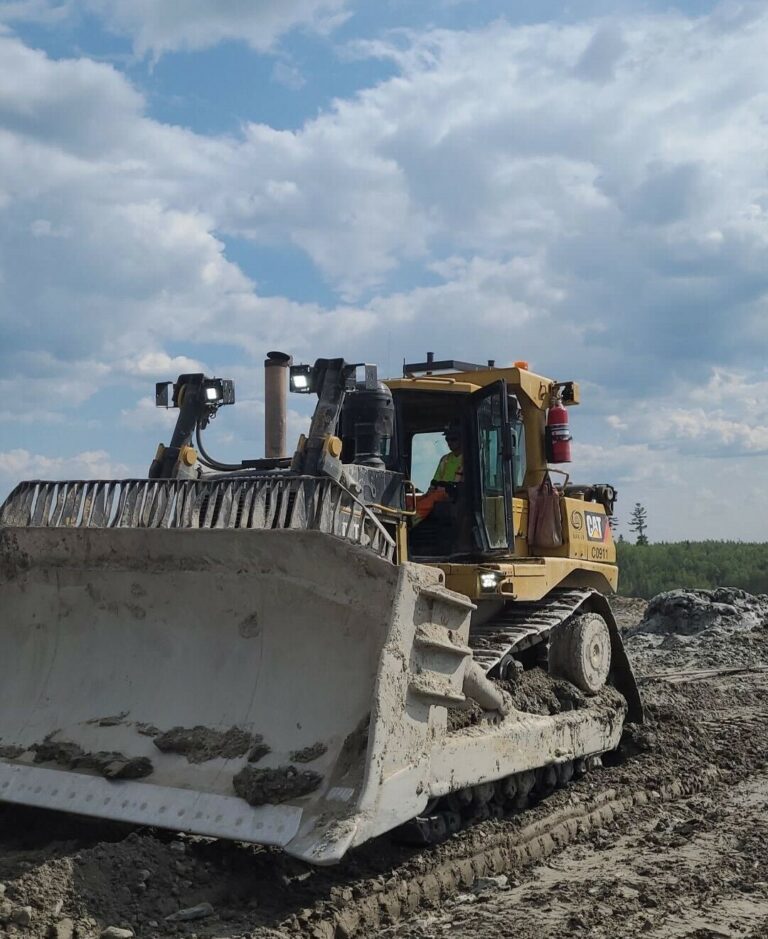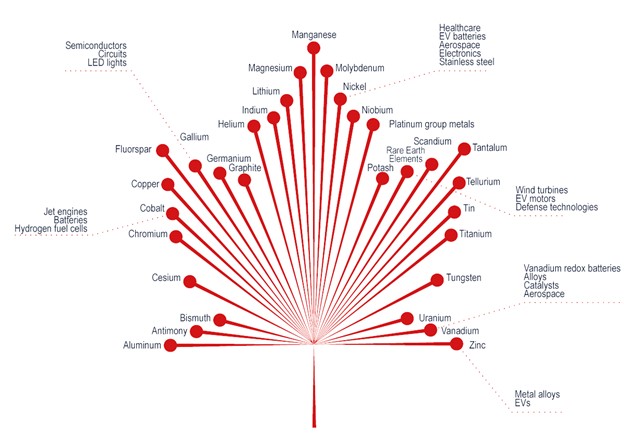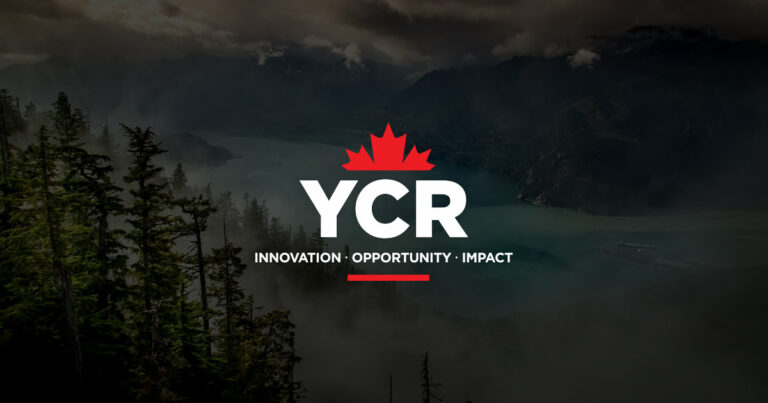
The Story of a Miner from Northern Ontario
I had the pleasure to interview a hard-working miner from Sudbury, Ontario, Ryley is a 21-year-old Canadian who actively works in Sudbury and Timmins with Vale S.A. Here are the

Whether it’s because of unsustainable and inhumane cobalt mining in the Congo, China’s dominance over global supply chains of rare earth elements, or the mass lithium shortages that are projected for this decade, critical minerals have become one of the most important subjects in world politics today. Global actors including the United States, the European Union, the United Kingdom, Japan, and countless others have recently released new strategies to secure reliable supplies of critical minerals.
Late last year Canada unveiled its official critical mineral strategy, a fifty-eight-page document that outlines Canada’s goals for critical mineral development, as well as some of the concrete steps Canada will be taking to achieve these goals. If executed correctly, Canada’s Critical Minerals Strategy will help bring wealth and security to our country in a sustainable manner so that Canada’s awe-inspiring environment and ecosystems can be preserved for years to come. The intention of this article is to provide a breakdown of Canada’s Critical Minerals Strategy by a young Canadian for young Canadians, to highlight what about this strategy is most important to young Canadians.
To begin, Canada’s Critical Minerals Strategy features a list of 31 minerals deemed to be critical based on them being at least one of the following:

Of these 31 critical minerals, lithium, graphite, nickel, cobalt, copper, and rare earth elements are being prioritized in the current strategy and will be the initial focus of federal investments in critical minerals. Since the Canadian government has deemed it to be in its interests to develop these industries, now is the time for young Canadians to become involved in these industries due to the potential for growth the Canadian government visualizes for them and the subsidies the Canadian government is providing these industries to ensure this vision becomes a reality.
Canada’s Critical Minerals Strategy contains five objectives and six focus areas which will ensure its five objectives are achieved. The five objectives are as follows:
These objectives represent values that are distinctly Canadian. Achieving objectives like economic growth and global security is what gives power to the strategy. However, climate action, environmental protection, reconciliation with Indigenous peoples, diversity, and inclusivity are distinct Canadian values. When resources are developed in Canada, the benefits of resource development can be used to promote Canadian values. By promoting Canadian values through our resource sector, Canada’s resource sector becomes something that young Canadians can take pride in as it is distinct from the resource sector of anywhere else in the world.
The first three focus areas of Canada’s Critical Minerals Strategy are: driving research, innovation, and exploration; accelerating project development; and building sustainable infrastructure. In conjunction with one another, these focus areas provide the foundation for building Canada into a critical minerals world powerhouse. Between these focus areas, over $3 billion is being invested and being proposed to be invested in various critical mineral-related projects including:
Additionally, as part of Canada’s critical minerals strategy the Canadian government is making over $10 billion dollars of investment across the battery value chains in companies including Ford, GM Canada, Lion Electric Co., Electra Battery Materials, Vale, Nano One, LG Energy Solutions, Stellantis, GM, Posco, BASF, and Umicore.
For young Canadians who are looking to find work in the Canadian mining sector, these are the companies and areas to be looking for. With all that cash moving around some of it is sure to be spent on geologists, engineers, policy analysts, and others who are capable of and passionate about growing Canada’s mining industry.
Social values are also promoted within the strategy’s focus areas including advancing reconciliation with Indigenous peoples as well as growing a diverse workforce and prosperous communities. Canada’s Budget 2022 allocates $103.4 million to have indigenous people meaningfully participate in the natural resource sector, this includes at least $25 million to support indigenous participation in Canada’s Critical Minerals Strategy.
Growing a diverse workforce and prosperous communities is the area of focus that most directly affects young Canadians. Building Canada’s critical mineral industry will require a workforce with a diverse set of skills which range from computer technicians to heavy equipment operators. Canada’s Critical Minerals Strategy will assist young Canadians through the Youth Employment and Skills Strategy and Canada Summer jobs, where youth jobs in the critical minerals sector can be offered.
Lastly, Canada’s Critical Minerals Strategy will focus on strengthening global leadership and security. Canada has formalized bilateral agreements on critical minerals with the US, the EU, and Japan, and is currently engaging in cooperation on critical minerals with the UK and South Korea. This strategy is in line with Canada’s Indo-Pacific Strategy which expresses the importance of assuring the security of Japan and South Korea through reliable supplies of critical minerals as well as other resources and sources of energy. Both Canada’s Critical Minerals and Indo-Pacific Strategies also express the importance of protecting our critical minerals sectors from hostile foreign interference, particularly from China.
The entanglement of these two strategies shows that the Canadian government treats resource security and critical mineral security as an essential part of national and global security. While geopolitical events are more often seen on the news than experienced in day-to-day life for most young Canadians, security is a privilege we ought not to take for granted. It has been over a century since Canada first allowed for the conscription of young Canadians between the ages of 20 and 45. Right now, it may seem unlikely for this practice to be used again any time soon. But this is a future we should avoid at all costs. Protecting the world with sustainably produced natural resources seems like a far preferable option to young Canadians than protecting it with our lives.
While the contents of Canada’s Critical Minerals Strategy might be far too intricate for average young Canadians to debate, it is worthwhile to understand the core objectives and actions of this strategy as it will have an immense effect on us and future generations. In spirit and in action, Canada’s Critical Minerals Strategy promotes YCR’s core values of people, planet, and prosperity. To uphold these values for ourselves and for future generations it is necessary to continue advocating for concrete expressions of these values. Whether it’s as small as signing a petition or as large as starting a campaign, involvement with YCR provides a voice for young Canadians to express support for our core values.
Sign up for updates about our work at YCR. Please sign up using a personal email and not a work or school email if possible.
"*" indicates required fields

I had the pleasure to interview a hard-working miner from Sudbury, Ontario, Ryley is a 21-year-old Canadian who actively works in Sudbury and Timmins with Vale S.A. Here are the

Sovereign Wealth Funds (SWFs) are government-back or government-sponsored investment funds made up of money generated through the government, typically comprising a country’s surplus of reserves.

Are you interested in a career in forestry but are not sure which one may be right for you? The Canadian forestry sector has a diverse range of careers spanning